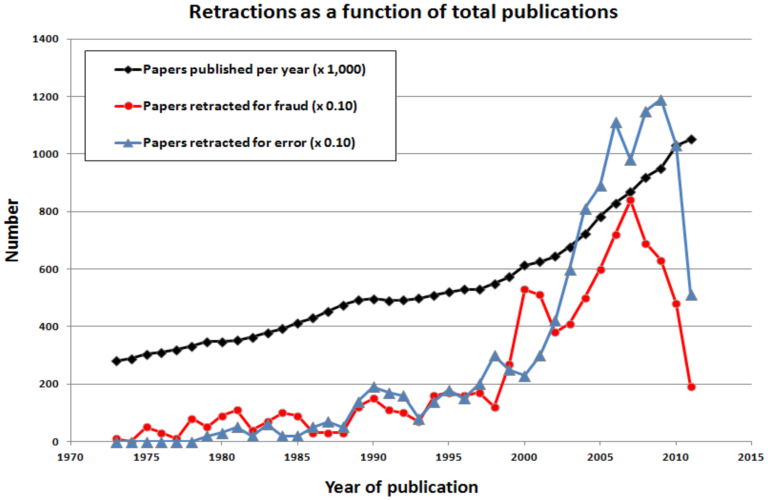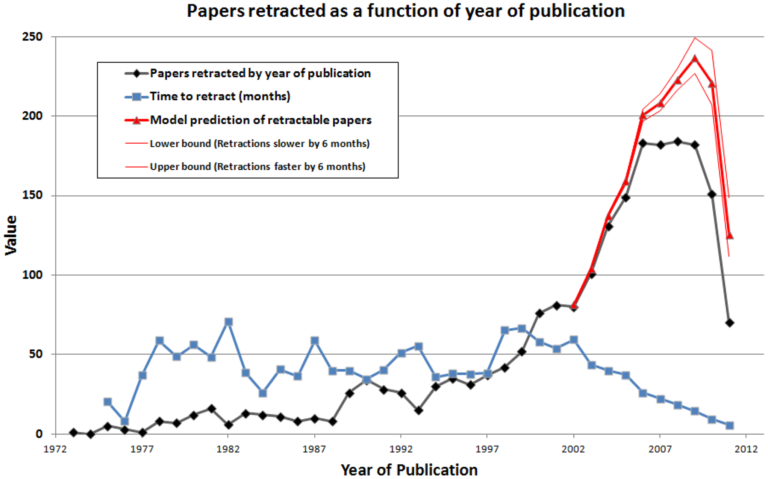This 2013 paper considers the dramatic rise in the rate of retraction for published scientific research since the 1990s. The authors conclude, “The increase in retracted articles appears to reflect changes in the behavior of both authors and institutions.”

Figure 1: Papers published and retracted per year since 1973.
They examined the interval between publication and retraction for 2,047 retracted articles indexed in PubMed. As shown in Figure 6, the number of scientific papers retracted annually has increased from ~50 papers published in 1997 to a projected 200+ retracted papers in 2002. This rate has outpaced the growth in the number of papers published per year over the same period. The mean time to retraction is 32.91 months, and the reasons for retraction are split equally between fraud and all other reasons (including scientific error, plagiarism, and duplication). There was no correlation between journal impact factor and overall retraction rate.

Figure 6: Articles retracted as a function of year of publication, shown with model predictions of the number of papers likely to be retracted.
Over one-third of all retractions in 2011 were written by authors with >5 retractions, but this share has decreased over time while the share of retractions by authors with only a single retraction has increased. These single-retraction authors are significantly more likely to have a paper retracted for misconduct rather than fraud. Conversely, discovery of fraud sometimes will lead to a large number of retractions, as 20% of all retractions in 2011 were due to discovery of consistent fraud by two authors.
Overall, the authors suggest the following factors have contributed to the increase in retraction rates:
- Editors are retracting articles significantly faster now than in the past.
- The scope of reasons for retraction has expanded to include plagiarism and duplicate publication.
- Journals are reaching further back in time to retract previously published flawed work.
- There has been an increase in the number and proportion of retractions by authors with a single retraction.
- Discovery of fraud by an author now prompts the reevaluation of the author’s entire body of work.
- Greater scrutiny of high-profile publications has had an impact, however modest, on retractions.
Comments on Why Has the Number of Scientific Retractions Increased?
We probably need less studies, more quality.
I think the greater question is why this article is based on a study from 2013? Surely there is more current research. I'm interested in the topic, but how hard would it be to look at more current data? (Wakefield and the bogus MMR vaccine link is one contributing factor, I would guess).
I wonder if the easy accessibility to publications has hastened the increase in scientific cretractions due to a higher and broader level of scrutiny spilling over to enforced accountability?
Why Has the Number of Scientific Retractions Increased?
3